Figures & data
Table 1. Background details for participants in Experiments 1–3.
Figure 1. The proportion of words correctly recalled (top), intrusions (middle), and “don’t know” responses (bottom) for schema-present and schema-absent conditions, fast and slow encoding speeds, and young and older adults in Experiment 1. Error bars are ±1 SE.
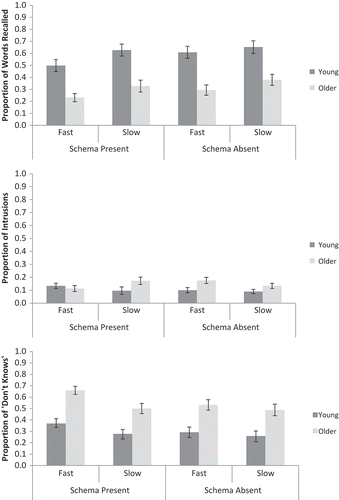
Figure 2. Mean RTs (based on medians for each participant) for correct (top panel) and “don’t know” (bottom panel) responses for schema-present and schema-absent conditions, fast and slow encoding speeds, and young and older adults in Experiment 1. Error bars are ±1 SE.
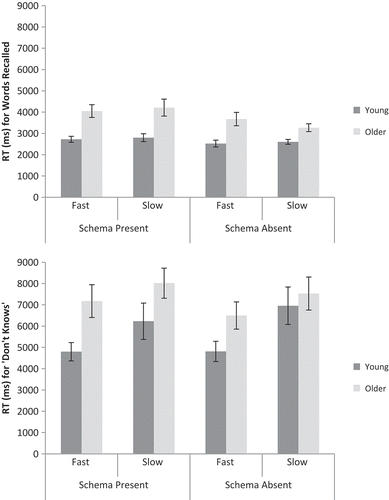
Figure 3. The proportion of words correctly recalled (top), intrusions (middle) and “don’t know” responses (bottom) for related and unrelated word pairs, for labels at encoding, retrieval or no labels, and for young and older adults in Experiment 2. Error bars are ±1 SE.
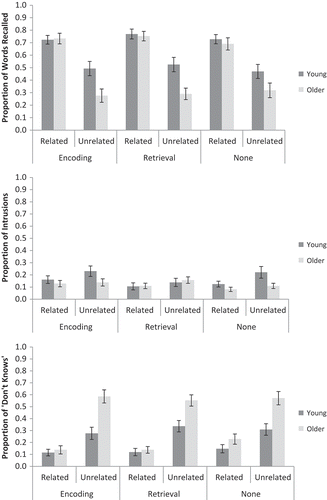
Figure 4. Mean RTs (based on medians for each participant) for correct responses for related and unrelated word pairs, for labels at encoding, retrieval, or no labels, and for young and older adults in Experiment 2. Error bars are ±1 SE.
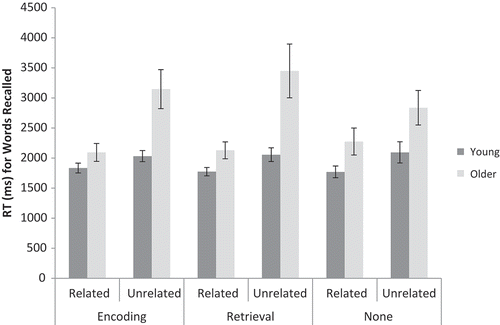
Figure 5. Schematic illustrations of example presentation trial screens for schema-present (top) and schema-absent (bottom) stimuli in Experiment 3. For each row, leftmost image indicates start screen, middle images depict two of nine zooming screens and rightmost image indicates end screen.
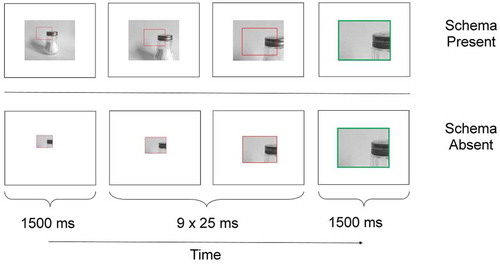
Figure 6. Proportion of hits minus proportion of false alarms for schema-present and schema-absent conditions for young and older adults in Experiment 3. Error bars are ± 1SE.
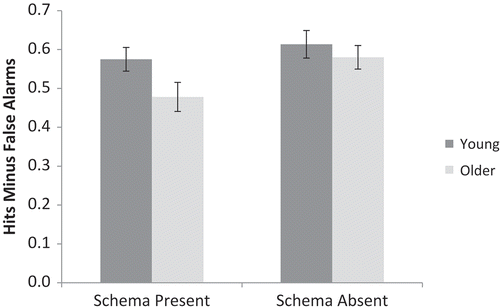
Figure 7. RTs for hits and for correct rejections for schema-present and schema-absent trials for young and older adults in Experiment 3. Error bars are ± 1SE.

Word pairs used in Experiment 1 and their corresponding category relations (italic pairs were presented as buffers).
